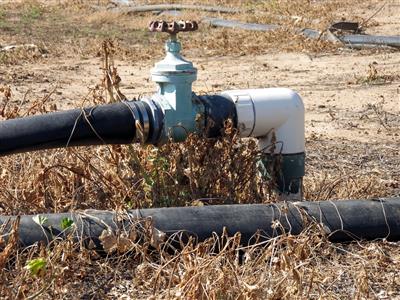WASHINGTON, July 12, 2017 — In response to a request from Amy Webbink, Farm Service Agency’s (FSA) acting State Executive Director in Montana, the U.S. Department of Agriculture (USDA) has designated Dawson, Fallon and Wibaux counties in Montana as primary natural disaster areas due to losses and damages caused by a recent drought.
Farmers and ranchers in Carter, Custer, McCone, Prairie and Richland counties in Montana also qualify for natural disaster assistance because their counties are contiguous.
Farmers and ranchers in Bowman, Golden Valley, McKenzie and Slope counties in North Dakota and Harding County in South Dakota also qualify for natural disaster assistance because their counties are contiguous.
All counties listed above were designated natural disaster areas on July 6, 2017, making all qualified farm operators in the designated areas eligible for FSA’s emergency (EM) loans, provided eligibility requirements are met. Farmers in eligible counties have eight months from the date of the declaration to apply for loans to help cover part of their actual losses. FSA will consider each loan application on its own merits, taking into account the extent of losses, security available and repayment ability. FSA has a variety of programs, in addition to the EM loan program, to help eligible farmers recover from adversity.
Also released on July 12th:
WASHINGTON, July 12, 2017 — In response to a request from Amy Webbink, Farm Service Agency’s (FSA) acting State Executive Director in Montana, the U.S. Department of Agriculture (USDA) has designated Fergus, Petroleum, Phillips, Richland and Rosebud counties in Montana as primary natural disaster areas due to losses and damages caused by a recent drought.
Farmers and ranchers in the following counties in Montana also qualify for natural disaster assistance because their counties are contiguous. Those counties are: Big Horn, Blaine, Chouteau, Custer, Dawson, Garfield, Golden Valley, Judith Basin, McCone, Musselshell, Powder River, Roosevelt, Treasure, Valley, Wheatland, Wibaux and Yellowstone.
Farmers and ranchers in McKenzie and Williams counties in North Dakota also qualify for natural disaster assistance because their counties are contiguous.
All counties listed above were designated natural disaster areas on July 10, 2017, making all qualified farm operators in the designated areas eligible for FSA’s emergency (EM) loans, provided eligibility requirements are met. Farmers in eligible counties have eight months from the date of the declaration to apply for loans to help cover part of their actual losses. FSA will consider each loan application on its own merits, taking into account the extent of losses, security available and repayment ability. FSA has a variety of programs, in addition to the EM loan program, to help eligible farmers recover from adversity.
Other FSA programs that can provide assistance, but do not require a disaster declaration, include Operating and Farm Ownership Loans; the Emergency Conservation Program; Livestock Forage Disaster Program; Livestock Indemnity Program; Emergency Assistance for Livestock, Honeybees and Farm-Raised Fish Program; and the Tree Assistance Program. Interested farmers may contact their local USDA service centers for further information on eligibility requirements and application procedures for these and other programs. Additional information is also available online at http://disaster.fsa.usda.gov.
Other FSA programs that can provide assistance, but do not require a disaster declaration, include Operating and Farm Ownership Loans; the Emergency Conservation Program; Livestock Forage Disaster Program; Livestock Indemnity Program; Emergency Assistance for Livestock, Honeybees and Farm-Raised Fish Program; and the Tree Assistance Program. Interested farmers may contact their local USDA service centers for further information on eligibility requirements and application procedures for these and other programs. Additional information is also available online at http://disaster.fsa.usda.gov.
Picture: Pixabay


